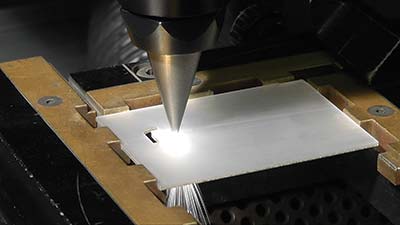- Types of processing: laser cleaning
- Material processed: metallic materials
- Advantages: high process speed

Laser cleaning
Laser cleaning is a modern method of vapourising unwanted layers of rust, paint, oils and other contaminants from various types of surface. In contrast to other mechanical or chemical cleaning technologies, laser ablation has many advantages. It is a non-contact, environmentally friendly, efficient and extremely precise process.
Photo gallery
The course of application involves the use of concentrated electromagnetic radiation to create a ‘laser broom’ that effectively vaporises contaminants. To do this, a laser source suitable for the material must be selected. Key parameters include the wavelength, which is responsible for absorption, the beam power, which determines the speed of the entire process, and the laser mode to ensure efficiency and further effects such as material structuring, which can benefit from increased adhesion.
Laser cleaning has found its way into many fields of application
- In industry for the removal of rust, paint, varnish, oil, grease and other contaminants. For example, car bodies, engine blocks, structural metal parts, rubber and injection moulds, etc. can be given a second life.
- For the removal of graffiti and other dirt from facades and walls.
- Cleaning and conservation of monuments, e.g. bas-reliefs, murals, obelisks and other types of historic coatings.
- Removal of dirt from parts before and after laser or conventional welding (MIG/MAG/TIG/plasma).
An important point that is often neglected is safety when using lasers in cleaning applications. The surfaces to be cleaned not infrequently have a non-uniform surface that reflects laser radiation in an uncontrolled manner. This situation poses a danger not only to the operator, but also to everyone present in the vicinity of the laser work. It is necessary to use appropriate protective measures and to cordon off the work area with certified protective equipment, which you will find here.
